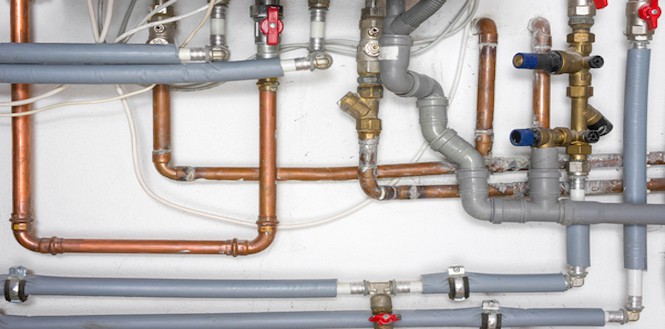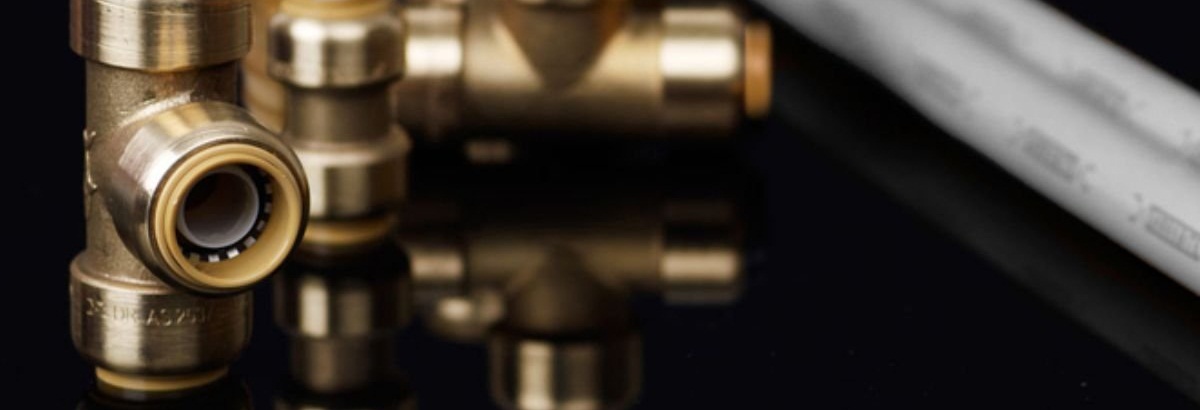We've stumbled upon this great article pertaining to Anatomy of a House: Understanding the Components listed below on the internet and felt it made good sense to write about it with you on this page.

Understanding just how your home's plumbing system functions is crucial for each house owner. From delivering clean water for alcohol consumption, cooking, and showering to safely getting rid of wastewater, a properly maintained plumbing system is essential for your family's health and wellness and convenience. In this comprehensive overview, we'll discover the intricate network that comprises your home's pipes and deal tips on upkeep, upgrades, and dealing with typical issues.
Introduction
Your home's pipes system is more than just a network of pipes; it's an intricate system that guarantees you have access to clean water and effective wastewater elimination. Knowing its elements and exactly how they interact can aid you avoid expensive repair services and ensure everything runs smoothly.
Fundamental Parts of a Pipes System
Pipelines and Tubes
At the heart of your pipes system are the pipelines and tubes that lug water throughout your home. These can be constructed from numerous products such as copper, PVC, or PEX, each with its benefits in regards to sturdiness and cost-effectiveness.
Components: Sinks, Toilets, Showers, and so on.
Components like sinks, bathrooms, showers, and tubs are where water is made use of in your house. Recognizing just how these components attach to the pipes system aids in detecting troubles and preparing upgrades.
Valves and Shut-off Points
Valves control the flow of water in your pipes system. Shut-off shutoffs are critical during emergencies or when you need to make repairs, allowing you to separate parts of the system without disrupting water flow to the entire residence.
Water Supply System
Main Water Line
The primary water line connects your home to the community water or a private well. It's where water enters your home and is distributed to numerous components.
Water Meter and Stress Regulatory Authority
The water meter actions your water use, while a pressure regulator ensures that water flows at a secure stress throughout your home's pipes system, avoiding damage to pipes and components.
Cold Water vs. Warm water Lines
Recognizing the difference in between cold water lines, which supply water directly from the main, and warm water lines, which lug warmed water from the water heater, helps in repairing and planning for upgrades.
Water drainage System
Drain Pipes and Traps
Drain pipes lug wastewater far from sinks, showers, and commodes to the sewer or sewage-disposal tank. Traps avoid drain gases from entering your home and likewise catch particles that could create obstructions.
Air flow Pipelines
Air flow pipelines enable air into the drainage system, avoiding suction that could slow down water drainage and trigger catches to empty. Correct air flow is crucial for preserving the stability of your pipes system.
Importance of Correct Drain
Guaranteeing appropriate drainage avoids backups and water damage. Regularly cleaning drains and maintaining catches can protect against expensive fixings and extend the life of your pipes system.
Water Heater
Kinds Of Water Heaters
Hot water heater can be tankless or typical tank-style. Tankless heating systems warmth water on demand, while storage tanks save warmed water for instant usage.
Upgrading Your Plumbing System
Factors for Updating
Updating to water-efficient fixtures or replacing old pipelines can enhance water quality, reduce water bills, and boost the worth of your home.
Modern Plumbing Technologies and Their Benefits
Explore innovations like wise leak detectors, water-saving toilets, and energy-efficient hot water heater that can save cash and reduce environmental effect.
Price Considerations and ROI
Determine the ahead of time prices versus long-term cost savings when thinking about pipes upgrades. Several upgrades pay for themselves with lowered energy bills and fewer repair work.
Exactly How Water Heaters Attach to the Pipes System
Understanding how water heaters link to both the cold water supply and hot water distribution lines assists in detecting concerns like not enough hot water or leaks.
Maintenance Tips for Water Heaters
Frequently purging your hot water heater to get rid of debris, examining the temperature level setups, and checking for leakages can expand its life expectancy and improve energy effectiveness.
Common Plumbing Problems
Leakages and Their Causes
Leakages can take place because of maturing pipes, loose fittings, or high water stress. Resolving leaks without delay prevents water damage and mold development.
Clogs and Clogs
Blockages in drains pipes and commodes are commonly caused by flushing non-flushable things or an accumulation of oil and hair. Using drain displays and bearing in mind what goes down your drains can prevent clogs.
Indications of Pipes Troubles to Look For
Low water pressure, slow-moving drains, foul odors, or unusually high water costs are indicators of prospective pipes troubles that must be attended to immediately.
Plumbing Upkeep Tips
Routine Evaluations and Checks
Arrange yearly plumbing examinations to capture issues early. Look for indicators of leakages, rust, or mineral buildup in taps and showerheads.
DIY Maintenance Tasks
Basic tasks like cleansing faucet aerators, looking for bathroom leakages utilizing color tablets, or protecting exposed pipes in chilly climates can avoid significant pipes concerns.
When to Call an Expert Plumbing
Know when a plumbing problem requires specialist know-how. Attempting complicated fixings without correct knowledge can bring about more damage and higher fixing expenses.
Tips for Reducing Water Use
Straightforward behaviors like taking care of leakages immediately, taking shorter showers, and running full loads of washing and recipes can preserve water and lower your energy expenses.
Eco-Friendly Plumbing Options
Think about lasting plumbing products like bamboo for flooring, which is durable and environmentally friendly, or recycled glass for countertops.
Emergency Preparedness
Actions to Take During a Plumbing Emergency situation
Know where your shut-off valves are located and exactly how to switch off the supply of water in case of a ruptured pipe or major leakage.
Significance of Having Emergency Calls Handy
Keep call information for regional plumbing professionals or emergency services conveniently offered for quick action throughout a pipes crisis.
Environmental Effect and Preservation
Water-Saving Components and Devices
Installing low-flow taps, showerheads, and bathrooms can dramatically reduce water use without sacrificing efficiency.
DIY Emergency Situation Fixes (When Suitable).
Momentary fixes like using air duct tape to patch a dripping pipe or positioning a container under a trickling tap can lessen damage up until an expert plumber gets here.
Final thought.
Recognizing the anatomy of your home's pipes system equips you to maintain it effectively, saving time and money on repair services. By complying with regular maintenance routines and staying informed about contemporary pipes innovations, you can guarantee your pipes system runs successfully for years ahead.
HOW YOUR PLUMBING SYSTEM WORKS
Which Pipes Do What?
Blue lines = fresh water supply entering the building Red lines = hot water supply entering the building Grey lines = pipes carrying waste away from the building and venting pipes carrying gases away from the building (through the roof) YOUR MAIN PLUMBING SYSTEMS
There are two main plumbing systems that support your home s basic plumbing needs one that brings clean water into your home, and one that sends dirty water away from your home. Connected to the toilet, bath, shower, and other faucets in your home, these two systems keep your water flowing in the right directions.
ACCESSING FRESH WATER
Fresh and clean water is brought into your home through the main water supply line . Filtered through one pipe, this water is pressured to flow into the various fixtures in your home at any given time.
This water can be sourced from a well located on your property, a pond or river (mostly cottages), or, as in most cases, from the city s municipal water treatment centre. However, it is important to note that water that is untreated, such as the water siphoned from ponds or rivers, may not be safe to drink. Personal water supplies always need to be treated for hardness and contaminants before consumed.
MUNICIPAL WATER SUPPLIES
Improve taste and odour Remove sediment Eliminate hardness Reduce chlorine COLD WATER SUPPLY VS. HOT WATER SUPPLY
Cold water flows into your home or building through the service line, which then distributes hot or cold water to your fixtures. This line is most commonly run through a central column that runs floor to floor. Hot water runs in short and straight pipes as the longer the pipeline, the more heat that will be lost in the transfer. Having shorter pipes also allows residents to access hot water more quickly.
WASTE WATER SYSTEM
Your wastewater system is divided into two parts pipes that send wastewater away from your home and venting pipes that send sewer gas away from your home. Sewage water travels through pipes that flush the water and waste towards local sewers that are operated and managed by your city or town. Most sewer systems rely on gravity to move the wastewater to where it needs to go.
The further away from your toilet or sink, the larger wastewater pipes become. This allows for waste to be disposed of from various parts of your home or business at once without pipe blockages. The angle and flow of these pipes are also essential for keeping your waste pipes clear of build up.
https://harrisplumbing.ca/how-your-home-plumbing-system-works/

I am very taken with Plumbing Installation 101: All You Need to Know and I'm hoping you liked the new piece. Sharing is caring. Helping others is fun. Thank you so much for taking the time to read it.
Call Today